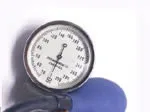How you can reap health benefits from being fit, even if a little fat. If you think you can tell how fit someone is, simply by looking them up and down, think again. Interesting research is being conducted into measurements of fitness at different levels of body weight and what impact this has on overall health and well-being. And the results are startling. Does exercise make a difference to health if you’re overweight? The research, lead by Dr Steven Blair from The Cooper Institute in the US, is revealing the benefits of regular physical activity regardless of body weight. The research team found that lean men who did not exercise regularly and were assessed as being “unfit” had double the death rate as obese men who exercised regularly and scored well on the fitness test. Should we forget about the healthy weight range? Dr Blair advocates that focusing on fitness is far more important than fatness. While falling within the healthy weight range or a body mass index (BMI) of 20-25 is generally associated with the best health, you can still prolong good health via regular exercise if you’re overweight. Dr Blair has evidence that men, who were overweight but fit, did not have an increased death rate even if they had signs of metabolic syndrome. Metabolic syndrome is the term given to describe a cluster of conditions including insulin resistance and raised blood cholesterol, which increases your risk of lifestyle diseases such as diabetes and heart disease. So how does this work in practical terms? It’s important to remember that losing weight is all about energy balance, or kilojoules in vs. kilojoules out. If you are overweight, a combination of reducing kilojoules from the food you eat plus burning more kilojoules through activity is the best approach to long-term success. The good news from this research is that while you’re working to achieve your weight loss goals, you can still make a major difference to your fitness and reduce your lifestyle disease risk via daily physical activity. So, if you’ve been constantly dieting and struggling to get off those last few kilos in order to reach the healthy weight range, a better approach may be to shift focus for a while. Concentrate on daily physical activity and maximising your fitness and forget about the scales. This way, you could be improving things internally, like lowering blood pressure, increasing the good cholesterol, controlling blood sugar levels better, which will all have a far greater impact on your health outcomes, regardless of whether or not you finally reach your goal weight.
Newsletter conversion description. Get the latest in your inbox.


.png?resize=380%2C285)






















.jpg?resize=380%2C285)




















